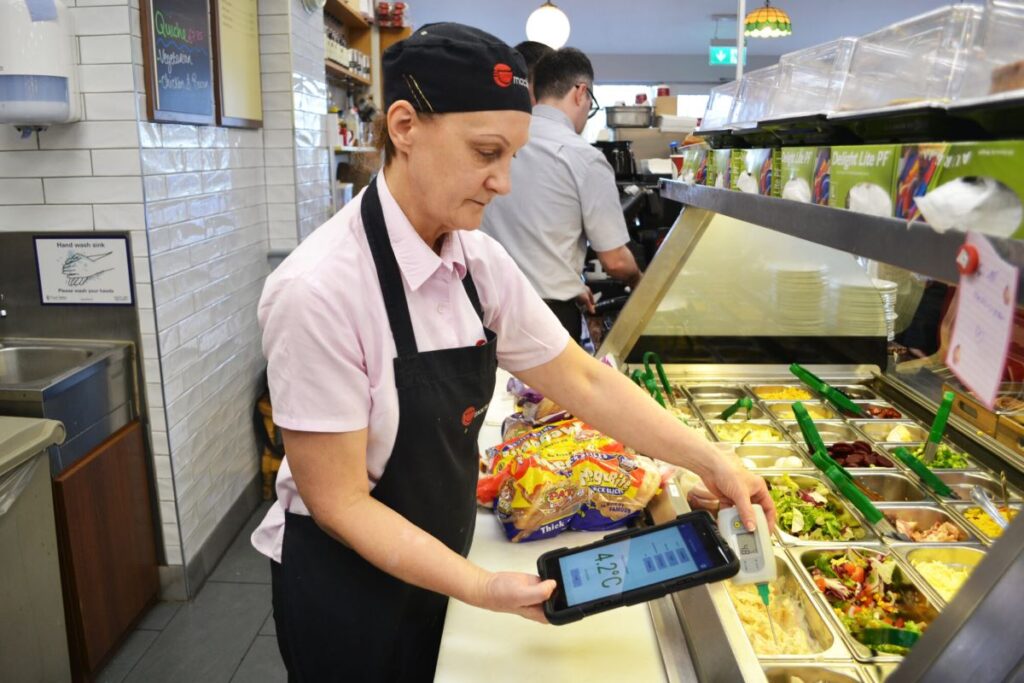How Remote Temperature Monitoring Systems Help Ensure Food Quality
In an age where food safety and quality are paramount, remote temperature monitoring systems have emerged as essential tools for businesses in the food industry. These systems not only enhance the safety of food products but also ensure that they maintain their quality throughout the supply chain. This article explores the significance of remote temperature monitoring systems, their benefits, and how they contribute to food quality assurance.
The Importance of Temperature Control in Food Safety
Temperature control is critical in the food industry, as improper handling can lead to foodborne illnesses and spoilage. Many food products, especially perishables, are highly sensitive to temperature variations. For instance, meat, dairy, and seafood require strict temperature management to prevent bacterial growth and maintain freshness.
Understanding the Risks
Foodborne pathogens thrive in environments where temperatures are not adequately controlled. The “danger zone” for food, typically defined as temperatures between 5°C and 60°C, is where bacteria can multiply rapidly. This highlights the necessity for constant monitoring to ensure that food products remain safe for consumption.
Moreover, temperature fluctuations can affect the sensory qualities of food, including taste, texture, and appearance. For instance, ice cream that melts and refreezes may develop an undesirable grainy texture, while fresh produce can lose its crispness if not stored at the correct temperature. Therefore, maintaining optimal temperature conditions is vital for both safety and quality.
In addition to the immediate health risks, the economic implications of temperature mismanagement can be significant. Food businesses may face increased costs due to spoilage, waste, and the need for frequent product replacements. Furthermore, the potential loss of customer trust and loyalty can have long-lasting effects on a brand’s market position. As consumers become more aware of food safety issues, they are increasingly likely to choose brands that demonstrate a commitment to maintaining high standards in temperature control.
Regulatory Compliance
Food businesses are subject to strict regulations regarding food safety and quality. In Australia, the Food Standards Australia New Zealand (FSANZ) sets out guidelines that include specific temperature requirements for various food categories. Non-compliance can lead to hefty fines and damage to a brand’s reputation.
Remote temperature monitoring systems provide an efficient way to ensure compliance with these regulations. By continuously tracking temperatures and providing alerts for any deviations, businesses can demonstrate due diligence in their food safety practices. These systems not only help in maintaining compliance but also facilitate better inventory management, as they allow businesses to identify trends in temperature fluctuations and adjust their storage practices accordingly. This proactive approach can lead to improved operational efficiency and a reduction in food waste, ultimately benefiting both the business and the environment.
How Remote Temperature Monitoring Systems Work
Remote temperature monitoring systems are sophisticated technologies designed to track and record temperature data in real-time. These systems typically consist of sensors, data loggers, and a cloud-based platform for analysis and reporting.
Components of the System
The primary component of a remote temperature monitoring system is the sensor, which is placed in the storage area or transport vehicle. These sensors measure the temperature at regular intervals and transmit the data to a centralised system. Data loggers can also be used to store this information for later analysis.
Cloud-based platforms play a crucial role in these systems, allowing users to access temperature data from anywhere with an internet connection. This capability enables food businesses to monitor conditions in real-time, providing peace of mind and facilitating quick responses to any temperature-related issues.
Alerts and Notifications
One of the most significant advantages of remote temperature monitoring systems is their ability to send alerts and notifications. When temperatures deviate from predefined thresholds, the system can automatically notify relevant personnel via email or SMS. This immediate alert system ensures that corrective actions can be taken swiftly, minimising potential risks to food quality.
Furthermore, many systems offer customizable alert settings, allowing businesses to tailor notifications based on their specific needs. This flexibility ensures that users are informed of critical issues without being overwhelmed by unnecessary alerts.

Benefits of Remote Temperature Monitoring Systems
The implementation of remote temperature monitoring systems offers numerous benefits to food businesses, ranging from improved safety to enhanced operational efficiency.
Enhanced Food Safety
By continuously monitoring temperatures, these systems significantly reduce the risk of foodborne illnesses. The ability to identify and rectify temperature deviations promptly helps ensure that food products are stored and transported under safe conditions.
Moreover, the data collected can be invaluable for identifying trends and patterns in temperature fluctuations, allowing businesses to make informed decisions about their processes and storage methods.
Improved Quality Control
Maintaining consistent temperature levels is crucial for preserving the quality of food products. Remote temperature monitoring systems help businesses ensure that their products retain their intended taste, texture, and nutritional value.
For example, in the case of perishable goods, such as fresh fruits and vegetables, maintaining the correct temperature can extend shelf life and reduce waste. This not only benefits consumers but also enhances profitability for businesses.
Cost Efficiency
While there may be initial costs associated with implementing remote temperature monitoring systems, the long-term savings can be substantial. By preventing spoilage and minimising food waste, businesses can significantly reduce their operational costs.
Additionally, the efficiency gained from automating temperature monitoring allows staff to focus on other critical tasks, further enhancing productivity. The return on investment from these systems can be realised through improved food quality, reduced waste, and increased customer satisfaction.
Case Studies: Successful Implementations
Several businesses across Australia have successfully implemented remote temperature monitoring systems, resulting in improved food safety and quality. These case studies provide valuable insights into the practical applications of these technologies.
Case Study 1: A National Supermarket Chain
A leading supermarket chain in Australia faced challenges in maintaining consistent temperature control across its vast network of stores. By adopting a remote temperature monitoring system, the chain was able to monitor temperatures in real-time across all locations.
The implementation led to a significant reduction in food spoilage, with the supermarket reporting a 30% decrease in waste attributed to temperature-related issues. Additionally, the system’s data analytics capabilities allowed the chain to optimise its supply chain processes, ultimately enhancing customer satisfaction.
Case Study 2: A Local Dairy Producer
A local dairy producer struggled with maintaining the quality of its products during transportation. By integrating a remote temperature monitoring system into its logistics operations, the producer was able to track temperatures throughout the delivery process.
This initiative resulted in improved product quality, as the dairy products arrived at retailers in optimal condition. The producer also benefited from reduced complaints and returns, leading to increased customer loyalty and trust in their brand.
Challenges and Considerations
While remote temperature monitoring systems offer numerous advantages, there are challenges and considerations that businesses must address before implementation.
Initial Investment Costs
The initial investment required for purchasing and installing remote temperature monitoring systems can be a barrier for some businesses, particularly smaller operations. However, it is essential to consider the long-term savings and benefits that these systems can provide.
Many suppliers offer flexible financing options, allowing businesses to spread the costs over time. Additionally, the potential reduction in food waste and improvement in customer satisfaction can offset the initial expenditure.
System Integration
Integrating remote temperature monitoring systems with existing processes and technologies can be complex. Businesses must ensure that the new system is compatible with their current infrastructure and that staff are adequately trained to use it effectively.
Collaboration with experienced vendors can facilitate a smoother integration process, ensuring that the system meets the specific needs of the business.

Conclusion
Remote temperature monitoring systems play a vital role in ensuring food quality and safety across the food supply chain. By providing real-time monitoring, alerts, and data analysis, these systems help businesses maintain compliance with regulations, reduce waste, and enhance customer satisfaction.
As the food industry continues to evolve, the adoption of such technologies will become increasingly important. Businesses that invest in remote temperature monitoring systems will not only safeguard their products but also position themselves as leaders in food safety and quality assurance.
In a competitive market, the ability to guarantee the quality and safety of food products is invaluable. Embracing remote temperature monitoring systems is a proactive step towards achieving these goals, ultimately benefiting both businesses and consumers alike.
Related : Implementing a Temperature Monitoring System for Better Compliance and Efficiency

